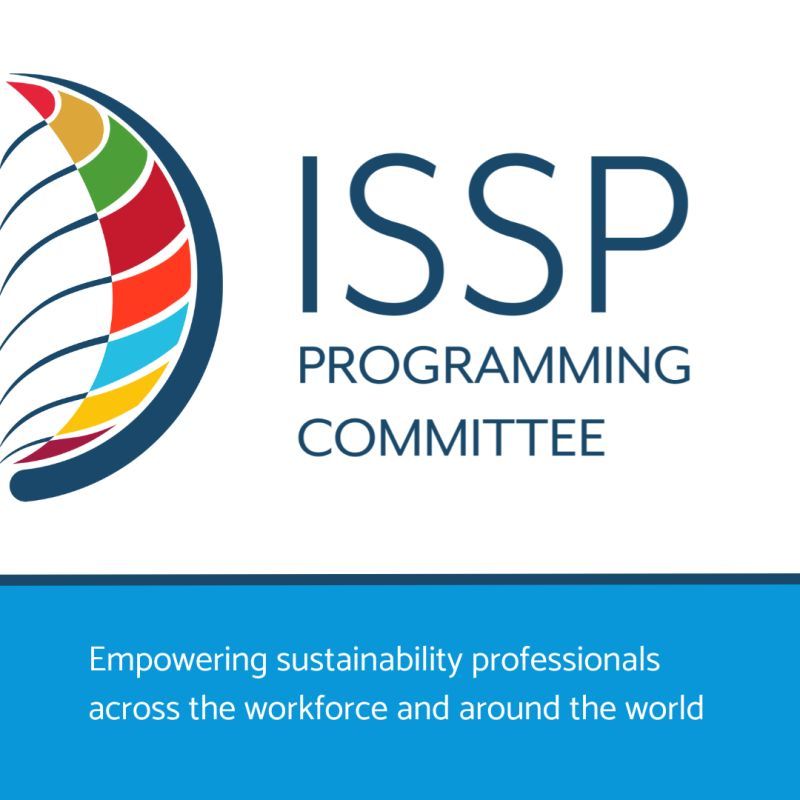ISSP is Hiring a New Executive Director!
We’re Hiring Our Next Executive Director
The International Society of Sustainability Professionals (ISSP) is seeking a visionary and strategic Executive Director to lead our global mission. This full-time remote role is a unique opportunity to drive innovation, grow our community, and shape the future of sustainability as a profession.
Application deadline: July 31, 2025
Job Description – Executive Director
Location: Remote | Reports To: ISSP Board of Directors
Position Type: Full-Time | FLSA Status: Exempt
Organization Overview
The International Society of Sustainability Professionals (ISSP) is the premier global community for sustainability practitioners. Our mission is to advance the sustainability profession through education, professional development, and certification. With members across industries and continents, ISSP provides vital resources, networking opportunities, and recognition for those working to make sustainability standard practice in organizations
and communities worldwide.
Position Summary
ISSP seeks a visionary and strategic Executive Director (ED) to lead the organization into its next phase of growth and impact. The ED will be the driving force behind ISSP’s mission, responsible for strategic leadership, operational excellence, member engagement, and financial sustainability. This position offers the unique opportunity to shape the future of the sustainability profession at a global level.
Resource Development
The ED will lead the organization’s resource development strategy to ensure long-term financial sustainability and growth. The ED will be responsible for driving membership growth and ensuring a strong, engaged, and diverse member community. This includes developing and implementing strategies to attract new members, retain existing ones, and enhance the overall member experience. The ED will analyze membership trends, gather feedback, and work with staff and stakeholders to deliver valuable programs, benefits, and communications that meet the evolving needs of the community. A key focus will be on sustaining long-term member engagement and loyalty through consistent value delivery, relationship-building, and alignment with the organization’s mission and professional
standards.
Earned Revenue Leadership
The ED will proactively identify and develop earned revenue opportunities that align with the organization’s mission and values. This may include expanding fee-based programs, certification offerings, educational products, events, and strategic partnerships that generate income while delivering value to members and stakeholders. The ED will assess market demand, pilot innovative initiatives, and ensure financial models are sustainable and mission-driven. By leveraging the organization’s expertise and brand, the Executive Director will build diversified revenue streams that enhance organizational resilience and impact.
Key Responsibilities
Strategic Leadership
- Collaborate with the Board to refine and implement ISSP’s strategic direction.
- Lead vision-setting and innovation to advance the sustainability profession.
- Represent ISSP as a thought leader and ambassador to members, partners, and the public.
Membership Growth & Engagement
- Drive strategies to grow, retain, and support ISSP’s global membership.
- Ensure high-quality member services, credential programs, and professional resources.
- Foster a vibrant and inclusive community of sustainability professionals.
Program Oversight & Delivery
- Oversee certification programs, educational content, events, and member benefits.
- Ensure alignment of programs with member needs and the organization's mission.
- Continuously evaluate program effectiveness and member satisfaction.
Operations & Financial Management
- Manage day-to-day operations, including a small remote team and vendor relationships.
- Develop and oversee the annual budget in collaboration with the Board Treasurer.
- Ensure financial health through efficient operations, revenue generation, and fundraising.
Governance & Board Relations
- Serve as the primary liaison to the Board of Directors.
- Support board development and governance best practices.
- Provide transparent reporting and strategic insight to the Board.
Qualifications
- Proven leadership in nonprofit, association, or membership-based organizations.
- 7+ years of progressive experience, including strategy, operations, and financial oversight.
- Passion for sustainability and a deep understanding of the profession.
- Strong communication, organizational, and relationship-building skills.
- Experience with remote teams, global stakeholders, and digital tools.
- Bachelors degree required; advanced degree in sustainability, nonprofit management, or a related field preferred.
Compensation & Benefits
ISSP offers a competitive compensation package commensurate with experience. Salary range will be $100,000 - $115,000/yearly depending upon experience. Benefits include flexible remote work, generous PTO, professional development support, and the opportunity to lead a mission-driven, global organization.
How to Apply
Interested candidates should submit a cover letter and resume to EDSEARCH@sustainabilityprofessonals.org by July 31, 2025. Applications will be reviewed on a rolling basis.
ISSP is an equal opportunity employer. We celebrate diversity and are committed to creating an inclusive environment for all.
Read perspectives from the ISSP blog



